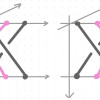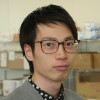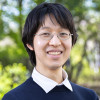165 events in 2023
-
Seminar
A dynamical model for IRAS 00500+6713: the remant of a type Iax supernova SN1181 hosting a double degenerate merger product WD J005311
July 7 (Fri) at 14:00 - 15:15, 2023
Takatoshi Ko (Ph.D. Student, Research Center for the Early Universe (RESCEU), The University of Tokyo)
Iras 00500+6713 is a bright nebula in the infrared, and X-ray observations show it consists of diffuse region and strong illuminated central region. In addition, optical spectral observations have recently revealed that fast wind with about 15,000 km/s is blowing from the massive white dwarf at the center. The properties of this nebula and white dwarf are very similar to those theoretically predicted by the binary white dwarf merger. In addition, its position on the celestial sphere and the extent make it a prime candidate for the remnant of SN 1181, a historical supernova. In this study, we propose that such a multilayered structure is formed by the collision between the remnant of SN 1181 and the stellar wind blowing from the central white dwarf, and succeeded in constructing a model that is consistent with the multi-wavelength observations. The results show that the progenitor of SN 1181 is a binary white dwarf with 1.3-1.9 solar mass and that their merger triggered an explosion that ejected mass with 0.2-0.6 solar mass to form the present object. The extent of the X-ray source concentrated in the center reveals that these winds began blowing within the last 30 years, and we will discuss this property as well.
Venue: Seminar Room #359 / via Zoom
Event Official Language: English
-
Lecture

NU-Q-iTHEMS-YITP Lecture: Applications of Quantum Computation in Quantum Field Theory
July 6 (Thu) - 7 (Fri), 2023
Masazumi Honda (Assistant Professor, Yukawa Institute for Theoretical Physics, Kyoto University)
This lecture aims to provide an introductory explanation of the application of quantum computation in numerical simulations of quantum field theory. We will begin by covering the fundamental aspects of quantum computation, followed by a discussion on its application to simulating spin systems. Subsequently, we will delve into introductory explanations of continuous field quantum theory and lattice field quantum theory, and discuss their simulation methods. Additionally, practical exercises utilizing IBM Qiskit for quantum simulations will be conducted. Important Notice for Participants: Please note that loaner laptops for the practical exercises will not be provided, so please bring your own laptops. Prior to the lecture, please ensure that you have set up your environment to use Jupyter Notebook, for example, by installing Anaconda. Organizers: Quantum Research Center (NU-Q), Niigata University / Yukawa Institute for Theoretical Physics (YITP), Kyoto University Co-organizer: RIKEN Interdisciplinary Theoretical and Mathematical Sciences Program (iTHEMS)
Venue: #A317, Building A, Faculty of Science, Niigata University / via Zoom
Event Official Language: Japanese
-
Seminar

Introduction to braid groups
July 5 (Wed) at 14:00 - 16:30, 2023
Haru Negami (Ph.D. Student, Graduate School of Science and Engineering, Chiba University)
Part 1 (14:00-15:00): Introduction to braid groups Braid groups are groups that are defined by figures formed by the entanglement of n strings. Besides this geometric realization, it is a very interesting field where algebra and analysis intersect. In the first half of this seminar, aimed mainly at those unfamiliar with braid groups, we will introduce three aspects of braid groups and review the history of the research. In particular, in the area of its relation to analysis, the relationship between KZ equations and braid groups will be introduced. Part 2 (15:30-16:30): Representations of braid groups and the relationship between monodromy representations of KZ equations In the second half of the talk, after a brief introduction to representation theory, we will introduce the Katz-Long-Moody construction, a method of constructing infinite series of representations of the semi-direct product of braid group and free group. We will also show that its special case is isomorphic to multiplicative middle convolution, a method for constructing monodromy representations of KZ equations. Lastly, we will also discuss the connection between representations of braid groups and knot invariants. The talk includes joint work with Kazuki Hiroe.
Venue: Seminar Room #359 / via Zoom
Event Official Language: English
-
Workshop

6th Workshop on Virus Dynamics
July 4 (Tue) - 6 (Thu), 2023
Catherine Beauchemin (Deputy Program Director, RIKEN Interdisciplinary Theoretical and Mathematical Sciences Program (iTHEMS))
Shingo Iwami (Professor, Graduate School of Science, Nagoya University)The Workshop on Virus Dynamics is an international meeting held every 2 years. It brings virologists, immunologists, and microbiologists together with mathematical and computational modellers, bioinformaticians, bioengineers, virophysicists, and systems biologists to discuss current approaches and challenges in modelling and analyzing different aspects of virus and immune system dynamics, and associated vaccines and therapeutics. This 6th version of the workshop builds on the success of previous ones held in Frankfurt (2013), Toronto (2015), Heidelberg (2017), Paris (2019) and virtually (2021). It is supported by the Interdisciplinary Theoretical and Mathematical Sciences (iTHEMS) program at RIKEN, by Nagoya University, and by the Japan Science and Technology Agency. Up-to-date information and registration is available via the website. The workshop is for in-person participation only (no virtual or hybrid option).
Venue: Noyori Conference Hall, Higashiyama Campus, Nagoya University
Event Official Language: English
-
Seminar
Maximum Force Conjecture and Black Hole Thermodynamics
June 30 (Fri) at 14:00 - 15:30, 2023
Yen Chin Ong (Professor, Center for Gravitation and Cosmology, College of Physical Science and Technology, Yangzhou University, China)
I review the current controversial status of the so-called "maximum force conjecture" in general relativity, whose validity has recently been debated. Then I will discuss how maximum force conjecture can nevertheless be relevant for black hole thermodynamics.
Venue: Hybrid Format (3F #359 and Zoom), Main Research Building
Event Official Language: English
-
Seminar

Journal Club: Inference of hydrodynamic equations for active matter
June 29 (Thu) at 16:00 - 17:00, 2023
Kyosuke Adachi (Special Postdoctoral Researcher, Nonequilibrium Physics of Living Matter RIKEN Hakubi Research Team, RIKEN Center for Biosystems Dynamics Research (BDR))
Event Official Language: English
-
Seminar
The classical equations of motion of quantised gauge theories
June 23 (Fri) at 13:30 - 15:00, 2023
Tom Melia (Associate Professor, Kavli Institute for the Physics and Mathematics of the Universe (Kavli IPMU), The University of Tokyo)
The Einstein and Maxwell equations are the jewels in the crown of classical physics. But classical physics is only an approximation to nature, arising as a limit of the underlying quantum mechanical description. And in the case of both general relativity and electromagnetism, owing to their gauge theory nature, the full set of classical equations of motion are not guaranteed to follow from the quantum theory. The time-time and time-space components of the Einstein equations in GR and Gauss’ law in EM are enforced ‘by hand' in the quantisation procedure—a choice so as to make the classical-like states behave as per our classical belief. But what if our universe was actually described by another classical-like state? For GR, the resulting modification of the Einstein equations can be packaged as the inclusion of an auxiliary energy-momentum tensor describing a ’shadow’ matter that adds no additional degrees of freedom to the theory. The homogeneous and isotropic background piece of this auxiliary matter contributes to expansion of the universe identical to cold dark matter, and the inhomogeneous components source curvature perturbations that grow linearly at linear order.
Venue: Hybrid Format (3F #359 and Zoom), Main Research Building
Event Official Language: English
-
Seminar
The role of fluid dynamics in microbial ecology
June 22 (Thu) at 14:00 - 15:00, 2023
Douglas R. Brumley (Senior Lecturer, Applied Mathematics, University of Melbourne, Australia)
Bacterial motility, symbioses, and marine nutrient cycling unfold at the scale of individual microbes, and are inherently dynamic. In this talk, I will discuss the role that fluid flows play in shaping the ecology of microbes, both in the open ocean as well as around coral surfaces. In each case, I will demonstrate how iteratively combining video-microscopy, image processing and mathematical modelling can resolve features of microbial lifestyles that are difficult or impossible to see otherwise, and show how single-cell measurements can be connected to bulk processes at the population-level.
Venue: Hybrid Format (3F #359 and Zoom), Main Research Building
Event Official Language: English
-
Seminar
Matrix estimation via singular value shrinkage
June 21 (Wed) at 15:30 - 16:30, 2023
Takeru Matsuda (Unit Leader, Statistical Mathematics Collaboration Unit, RIKEN Center for Brain Science (CBS))
In this talk, I will introduce recent studies on shrinkage estimation of matrices. First, we develop a superharmonic prior for matrices that shrinks singular values, which can be viewed as a natural generalization of Stein’s prior. This prior is motivated from the Efron–Morris estimator, which is an extension of the James–Stein estimator to matrices. The generalized Bayes estimator with respect to this prior is minimax and dominates MLE under the Frobenius loss. In particular, since it shrinks to the space of low-rank matrices, it attains large risk reduction when the unknown matrix is close to low-rank (e.g. reduced-rank regression). Next, we construct a theory of shrinkage estimation under the “matrix quadratic loss”, which is a matrix-valued loss function suitable for matrix estimation. A notion of “matrix superharmonicity” for matrix-variate functions is introduced and the generalized Bayes estimator with respect to a matrix superharmonic prior is shown to be minimax under the matrix quadratic loss. The matrix-variate improper t-priors are matrix superharmonic and this class includes the above generalization of Stein’s prior. Applications include matrix completion and nonparametric estimation.
Venue: Hybrid Format (3F #359 and Zoom), Main Research Building
Event Official Language: English
-
Seminar
Introduction to statistical decision theory and Stein’s paradox
June 21 (Wed) at 14:00 - 15:00, 2023
Takeru Matsuda (Unit Leader, Statistical Mathematics Collaboration Unit, RIKEN Center for Brain Science (CBS))
Statistical decision theory is a general framework for discussing optimality of statistical procedures such as estimation, testing and prediction. In 1956, Charles Stein found a counter-intuitive phenomenon in estimation of the mean parameter of a multivariate normal distribution. He showed that a shrinkage estimator” attains better estimation accuracy (smaller mean-squared error) than the maximum likelihood estimator when the dimension is greater than or equal to three. This phenomenon is related to several mathematical fields such as Markov processes and potential theory. The idea of shrinkage estimation has been employed in many statistical methods such as regularization, empirical Bayes and model selection. In this talk, I will introduce the statistical decision theory and illustrate Stein’s paradox.
Venue: Hybrid Format (3F #359 and Zoom), Main Research Building
Event Official Language: English
-
Lecture
2nd QGG Intensive Lectures: Large gauge transformation and infrared regularity in the inflationary universe
June 19 (Mon) - 20 (Tue), 2023
Takahiro Tanaka (Professor, Division of Physics and Astronomy, Graduate School of Science, Kyoto University)
In this lecture we will start with the general framework to analyse the density perturbation in the inflationary universe. Then, we will introduce various infrared (IR) phenomena, including IR divergences, delta N formalism and consistency relation. The underlying symmetry originally coming from 3D diffeomorphism invariance leads us to a harmonic and unified understanding of these phenomena. Program: June 19 10:00 - 10:15 Registration and reception (with coffee) 10:15 - 11:45 Lecture 1 11:45 - 13:30 Lunch & coffee break 13:30 - 15:00 Lecture 2 15:00 - 16:00 Coffee break 16:00 - 17:30 Lecture 3 17:45 - 18:30 Short talk session June 20 10:00 - 10:15 Reception (with coffee) 10:15 - 11:45 Lecture 4 11:45 - 13:30 Lunch & coffee break 13:30 - 15:00 Lecture 5 15:00 - 16:00 Coffee break 16:00 - 17:30 Lecture 6 17:30 - 18:30 Discussions & Closing
Venue: #535-537, 5F, Main Research Building
Event Official Language: English
-
School

g-RIPS-Sendai 2023
June 19 (Mon) - August 8 (Tue), 2023
The Research in Industrial Projects for Students (RIPS) program has been held at the Institute for Pure & Applied Mathematics (IPAM) of the University of California, Los Angeles. In 2018, the Advanced Institute for Materials Research (AIMR) at Tohoku University in Sendai launched the g-RIPS-Sendai program in collaboration with IPAM, targeting graduate-level students in mathematical science and related disciplines. Participants from the U.S. and Japan will work on cross-cultural teams on research projects designed by industrial partners. The projects are expected to be of great interest to the partners and offer stimulating challenges to students. For more information on this year's g-RIPS-Sendai 2023, please visit the program website at the related link. Organizers: Research Alliance Center for Mathematical Science (RACMaS), Tohoku University Tohoku Forum for Creativity (TFC), Tohoku University Advanced Institute for Materials Research (AIMR), Tohoku University In cooperation with the following organizations: RIKEN Interdisciplinary Theoretical and Mathematical Sciences Program (iTHEMS) Institute for Pure & Applied Mathematics (IPAM), UCLA
Venue: Advanced Institute for Materials Research (AIMR), Tohoku University
-
Workshop
iTHEMS Science Outreach Workshop 2023
June 16 (Fri) - 18 (Sun), 2023
This year's meeting on "Outreach of RIKEN iTHEMS 2023@Sendai&Zoom" will be held from FRI June 16 to SUN June 18, as a face-to-face meeting at TOKYO ELECTRON House of Creativity of Tohoku Forum for Creativity in cooperation with iTHEMS SUURI-COOL (Sendai) using ZOOM for the necessary part as well.
Venue: TOKYO ELECTRON House of Creativity, Katahira Campus, Tohoku University / via Zoom
Event Official Language: Japanese
-
Seminar
A Spin on Wave Dark Matter
June 15 (Thu) at 16:00 - 17:30, 2023
Mustafa Amin (Associate Professor, Department of Physics and Astronomy, Rice University, USA)
What can we learn about the intrinsic spin of ultralight dark matter field from astrophysical observations? That is, is dark matter is a scalar (spin 0), (spin 1) or tensor (spin 2) field? Using analytic calculations and 3+1 dimensional simulations, I will argue that the imprint of spin can be seen via (i) the initial density power spectrum, (ii) interference patterns in the density field inside dark matter halos, and through (iii) (polarized) solitons with macroscopic intrinsic spin. Based on features in the initial power spectrum, I will provide a bound on the dark matter mass > 10^(-18) eV for post-inflationary production. With increasing intrinsic spin, interference patterns in halos are reduced (and the inner shapes of halos modified) — which can be probed by lensing and dynamical heating of stars. Finally, after introducing polarized solitons, I will show that the time-scale of emergence of solitons (within halos) increases with increasing spin, and briefly discuss electromagnetic and gravitational wave signatures from such polarized solitons. Time-permitting, I will also mention connections to “spinor" Bose-Einstein condensates in the laboratory.
Venue: Hybrid Format (3F #359 and Zoom), Main Research Building
Event Official Language: English
-
Seminar
Phase reduction beyond the Kuramoto model
June 15 (Thu) at 14:00 - 15:00, 2023
Iván León (Research Scientist, Department of Systems and Control Engineering, Tokyo Institute of Technology)
Many biological, engineering and natural systems can be modeled as populations of coupled oscillators where each oscillator behaves periodically. When these units are coupled to each other, emergent phenomena, as synchronization, appears. However, dealing with those systems is usually difficult due to the large number of degrees of freedom. Conditionality reduction techniques to obtain simple tractable models are usually considered. The most common method is "phase reduction" that allows to capture the dynamics of each oscillator with just one variable, the phase. The succeed of the method was clear when the Kuramoto model, derived through phase reduction, gave a simple explanation to collective synchronization. Despite this success, phase reduction is often limited to the Kuramoto model because of the challenge to obtain analytical expressions. The porpoise of this talk is to make clear that phase reduction beyond Kuramoto model is possible. On the first part of the talk we introduce phase reduction and its limitations. Then we show how it is possible to obtain analytical phase reduced model for weakly nonlinear oscillators. Finally, we talk about second order phase reduction where higher order corrections are included to capture the qualitative dynamics and improve accuracy.
Venue: Hybrid Format (3F #359 and Zoom), Main Research Building
Event Official Language: English
-
Seminar
Quantum skyrmion lattices in Heisenberg ferromagnets
June 8 (Thu) at 17:00 - 18:15, 2023
Andreas Haller (Postdoctoral Researcher, Department of Physics and Materials Science, University of Luxembourg, Luxembourg)
Skyrmions are topological magnetic textures that can arise in noncentrosymmetric ferromagnetic materials. In most systems experimentally investigated to date, skyrmions emerge as classical objects. However, the discovery of skyrmions with nanometer length scales has sparked interest in their quantum properties. In this talk, I present our (numeric) results on the ground states of unfrustrated two-dimensional spin-1/2 Heisenberg lattices with Dzyaloshinskii-Moriya interactions, where we discovered a broad region in the zero-temperature phase diagram which hosts quantum skyrmion lattices. The simulations are based on an established variational optimization algorithm for matrix product states called density matrix renormalization group, which can faithfully approximate the ground states of small 2D clusters well beyond system sizes amenable for exact diagonalization. We argue that the quantum skyrmion lattice phase can be detected experimentally in the magnetization profile via local magnetic polarization measurements as well as in the spin structure factor via neutron scattering experiments. Deep in the skyrmion ordered phase, we find that the quantum skyrmion lattice state is only weakly entangled with ‘domain wall' entanglement between quasiparticles and environment localized near the boundary spins of the skyrmion. In this ordered regime of weakly entangled entities, large clusters of O(1000) sites can be simulated with great efficiency. Field: condensed matter physics Keywords: quantum spin systems, topology, density matrix renormalization group
Venue: via Zoom
Event Official Language: English
-
Seminar
Deciphering speciation processes: a mathematical modelling approach to biodiversity patterns
June 8 (Thu) at 10:00 - 11:00, 2023
Ryo Yamaguchi (Assistant Professor, Department of Advanced Transdisciplinary Sciences, Faculty of Advanced Life Science, Hokkaido University / Postdoctoral Research Fellow, Biodiversity Research Centre, University of British Columbia, Canada)
The grandeur and complexity of Earth’s biodiversity present a challenge to comprehend the intricate mechanisms underlying speciation. Once dubbed by Darwin as the “mystery of mysteries,” speciation remains a frontier in biology, with much still cloaked in obscurity. Applying mathematical models inspired by population genetics and individual-based simulations, I aim to shed light on the complex mechanisms underlying speciation. In this talk, I focus on the concept of a “speciation cycle,” a recurring pattern integral to the formation of biodiversity. In contrast to traditional views that focus solely on a single speciation event, our approach argues for the necessity of multiple intertwined processes. These include the coexistence of closely related species, ongoing diversification, and the accumulation of new species, all while avoiding extinction. By overviewing mathematical models of each evolutionary and ecological process, I will introduce their basic ideas, and examine under what conditions the formation and coexistence of new species are promoted. Then we further explore the temporal and spatial dimensions of speciation, looking closely at the intervals between speciation events and the steady buildup of biodiversity over geological timescales. By bridging the gap between microevolutionary processes and macroevolutionary patterns, I hope to enable the prediction of biodiversity patterns based on a deeper understanding of speciation mechanisms.
Venue: via Zoom
Event Official Language: English
-
Seminar

Around homogeneous spaces of complex semisimple quantum groups
June 7 (Wed) at 14:00 - 16:30, 2023
Kan Kitamura (Ph.D. Student, Graduate School of Mathematical Sciences, The University of Tokyo)
Murray and von Neumann initiated the study of operator algebras motivated by the mathematical foundations of quantum physics. Operator algebras give good language to treat quantum symmetries, such as quantum groups. In this talk, I would like to give an overview of this topic first. Then, I discuss the q-deformations of complex semisimple Lie groups. From an operator algebraic viewpoint, we can treat them as "locally compact" quantum groups. Especially, I will focus on its homogenous spaces coming from discrete quantum subgroups with a motivation toward the quantum analog of lattices. Unlike the classical setting, we can obtain a complete classification of its discrete quantum subgroups.
Venue: Seminar Room #359 (Main Venue) / via Zoom
Event Official Language: English
-
Seminar
Termination of Superradiance from a Binary Companion
June 6 (Tue) at 13:30 - 15:00, 2023
Huiyu Zhu (Ph.D. Student, Department of Physics, Hong Kong University of Science and Technology, Hong Kong)
We study the impact of a binary companion on black hole superradiance at orbital frequencies away from the gravitational-collider-physics (GCP) resonance bands. A superradiant state can couple to a strongly absorptive state via the tidal perturbation of the companion, thereby acquiring a suppressed superradiance rate. Below a critical binary separation, this superradiance rate becomes negative, and the boson cloud gets absorbed by the black hole. This critical binary separation leads to tight constraints on GCP. Especially, a companion with mass ratio q > 10^−3 invalidates all GCP fine structure transitions, as well as almost all Bohr transitions except those from the |211> state. Meanwhile, the backreaction on the companion manifests itself as a torque acting on the binary, producing floating/sinking orbits that can be verified via pulsar timing. In addition, the possible termination of cloud growth may help to alleviate the current bounds on the ultralight boson mass from various null detections.
Venue: Hybrid Format (3F #359 and Zoom), Main Research Building
Event Official Language: English
-
Seminar

Modelling radiation cancer treatment with ordinary and fractional differential equations
June 1 (Thu) at 10:00 - 11:00, 2023
Kathleen Wilkie (Associate Professor, Department of Mathematics, Toronto Metropolitan University, Canada)
Fractional calculus has recently been applied to mathematical modelling of tumour growth, but its use introduces complexities that may not be warranted. Mathematical modelling with differential equations is a standard approach to study and predict treatment outcomes for population-level and patient-specific responses. Here we use patient data of radiation-treated tumours to discuss the benefits and limitations of introducing fractional derivatives into three standard models of tumour growth. The fractional derivative introduces a history-dependence into the growth function, which requires a continuous death-rate term for radiation treatment. This newly proposed radiation-induced death-rate term improves computational efficiency in both ordinary and fractional derivative models. This computational speed-up will benefit common simulation tasks such as model parameterization and the construction and running of virtual clinical trials.
Venue: via Zoom
Event Official Language: English
165 events in 2023
Events
Categories
series
- iTHEMS Colloquium
- MACS Colloquium
- iTHEMS Seminar
- iTHEMS Math Seminar
- DMWG Seminar
- iTHEMS Biology Seminar
- iTHEMS Theoretical Physics Seminar
- Information Theory SG Seminar
- Quantum Matter Seminar
- ABBL-iTHEMS Joint Astro Seminar
- Math-Phys Seminar
- Quantum Gravity Gatherings
- RIKEN Quantum Seminar
- Quantum Computation SG Seminar
- Asymptotics in Astrophysics SG Seminar
- GW-EOS WG Seminar
- DEEP-IN Seminar
- NEW WG Seminar
- Lab-Theory Standing Talks
- QFT-core Seminar
- STAMP Seminar
- QuCoIn Seminar
- Number Theory Seminar
- Academic-Industrial Innovation Lecture
- Berkeley-iTHEMS Seminar
- iTHEMS-RNC Meson Science Lab. Joint Seminar
- RIKEN Quantum Lecture
- Theory of Operator Algebras
- iTHEMS Intensive Course-Evolution of Cooperation
- Introduction to Public-Key Cryptography
- Knot Theory
- iTHES Theoretical Science Colloquium
- SUURI-COOL Seminar
- iTHES Seminar
